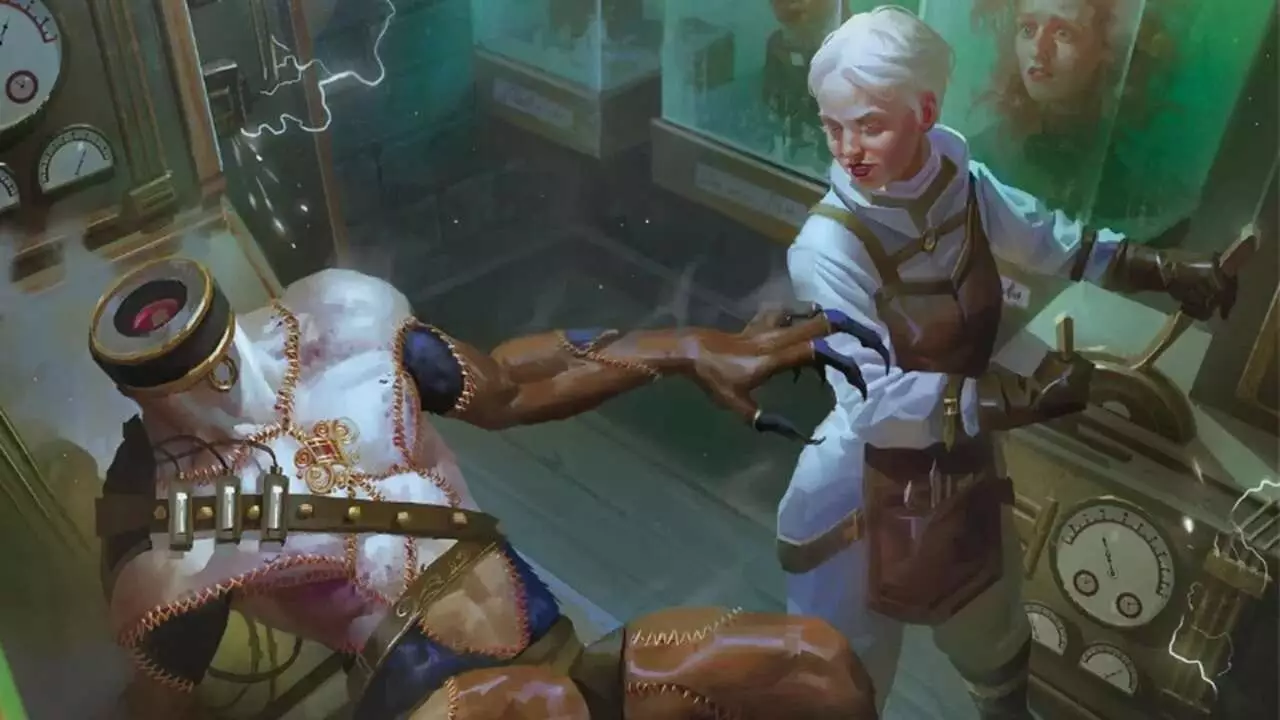Dungeons & Dragons has always thrived on blending creativity and community engagement, but with the latest addition to Unearthed Arcana, Wizards of the Coast outdo themselves by tapping into the horror genre. The integration of eight new subclasses—two entirely new and six updated from 5th Edition—promises to deliver a nightmarish twist to gameplay, catering to players’ appetites for fright and darkness. With a thrilling focus on horror-themed narrative, these subclasses invite players to explore unsettling themes that breathe life into their character choices.
Grim Inspirations: The Birth of the New Subclasses
Wizards of the Coast has recognized a unique opportunity to revolutionize existing archetypes by taking inspiration from horror classics. The introduction of the Reanimator for Artificers is particularly fascinating. Drawing parallels to Mary Shelley’s “Frankenstein,” this subclass allows players to break boundaries by stitching together corpses and manipulating the very essence of life and death. It isn’t merely about combat; it challenges players to confront moral dilemmas regarding the sanctity of life, identity, and what it means to play god. The idea of reanimating a companion that evolves—with the potential to become a living bomb—effortlessly draws attention to the darker side of technology and its consequences in a fantasy setting.
Moreover, the Hollow Warden Ranger channels the primal fears embedded within old folk tales. Dubbed the “Spooky Ranger,” this archetype embraces elements of folklore and myth, summoning energies from archaic guardians of the forest. This subclass shifts the paradigm of the traditional ranger, making nature not just a home but a terrifying and violent entity. By emphasizing cryptids and forest terrors, it encourages players to redefine their relationships with the natural world, allowing for deeper character development and storytelling opportunities.
Updated Archetypes: Reinventions of the Macabre
Wizards of the Coast hasn’t just relied on new whims, but instead has diligently updated existing subclasses to align with a horror-centric approach. The College of Spirits Bard, with roots in Van Richten’s Guide to Ravenloft, has transformed into a spectral medium who negotiates with the unseen. This evolution elevates the Bard’s role from mere entertainer to a harbinger of ghostly sorrows and wisdom. The nuanced rules, where controlling spirits comes with its risks, enriches gameplay by introducing an underlying tension whenever a Bard channels the dead.
Similarly, the Grave Domain Cleric has been revamped to navigate the thin veil between life and death, reflecting the morbid beauty of necromancy. This revised subclass empowers Clerics to manipulate life forces, inflict curses, and become agents of both healing and doom. Where prior iterations may have confined Clerics to a more mundane role, this update places them at the heart of existential struggles as they grapple with their dual identities of saviors and destroyers.
The Phantom Rogue capitalizes on the concept of death not as an endpoint but as a powerful advantage. By becoming channels for negative energy, these Rogues open up avenues for stealthy, deadly strikes powered by lore and presence. When using their abilities to extract knowledge from the spirits of the deceased, they become not just killers, but integral parts of mystery and intrigue within the campaign.
The Spectrum of Dark Magic: Enchanted Subclasses
As we delve deeper into the horror-infused subclasses, Shadow Sorcerers wield magic that thrives in shadows and darkness. Their ability to teleport and summon the dead creates a unique gameplay experience that shifts between offense and strategy. This capability makes Sorcerers formidable yet enigmatic, evoking feelings of dread among their opponents.
Venturing into the abyss, the Hexblade Warlock and Undead Patron subclasses allow players to traverse the moral and ethical implications of dark pacts. With the Hexblade’s focus on cursed weaponry and the Undead Patron’s connection to the wicked, players are encouraged to explore the boundaries between power and corruption. The thematic depth encapsulates the notion that power often comes at a cost, enhancing the roleplay and decision-making that define the Dungeons & Dragons experience.
Engagement and Feedback: A Collaborative Future
Despite the allure of these macabre subclasses, it’s crucial to remember that they exist in a space of experimentation and potential refinement. Wizards of the Coast actively invites feedback, demonstrating a commitment to player agency and community involvement within the world of D&D. This collaborative spirit, through the lens of horror, stands as an encouraging testament to how game design can evolve. As players engage with these subclasses, they don’t just shape gameplay; they become architects of their haunting stories.
In a world where the dark and the whimsical coexist, Unearthed Arcana is going beyond blending genres. It minces the lines between tradition and innovation. These horror-themed subclasses not only reaffirm Dungeons & Dragons’ versatility but also invite players to confront their fears, ultimately transforming their adventures into thrilling, yet chilling, narratives.

